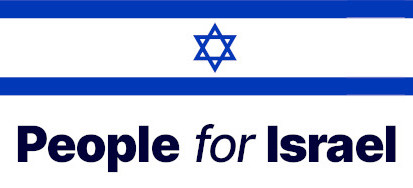A BRIEF HISTORY OF ISRAEL
The history of the Jewish people, and their roots in the Land of Israel, spans thirty-five centuries. It is here that the culture and religious identity of the Jewish people was formed. Their history and presence in this land has been continuous and unbroken throughout the centuries, even after the majority of Jews were forced into exile almost 2,000 years ago. With the establishment of the State of Israel on May 14, 1948, Jewish independence was renewed.
Early History
In the first century, when the Jewish civilization in Israel was already over 1,000 years old, Rome destroyed the Holy Temple in Jerusalem
and conquered the Jewish nation. At this time, the Romans renamed the region “Palestine” and exiled a portion of the population. However, some Jews remained.
For the two millennia after the Roman conquest, no other state or unique groups developed in the region. Instead, different empires and people came, colonized, ruled, and disappeared. Jews remained in Palestine during these changes. Throughout these 2,000 years, Jews, regardless of their current country of residence, continued to view a return to their ancient homeland as an essential part of their identify and a source of hope.
Between 1517 and 1917, Palestine was part of the Ottoman Empire. The region, initially prospered under the Ottomans, but during the Empire’s decline, it was reduced into a sparsely populated, impoverished, barren area.
Meanwhile, the Zionist movement was emerging in Europe in the late nineteenth century, generated by increasing antisemitism and violence against Jews in Europe as well as the rising nationalism throughout the continent.
The Zionists, whose goal was the return of the Jewish people to a sovereign state in the Land of Israel, fostered increased Jewish immigration to Palestine and sought international political recognition of the Jewish right to independence in Palestine.
When the Ottoman Empire was defeated in World War I (1914–1918), its lands were ceded to the victorious Allies who carved the land into new nations, which included Iraq, Lebanon, and Syria.
The British Mandate
Under the Treaty of Sèvres (1920), the League of Nations formally gave control of Palestine to the British government. Britain’s job was to implement the Balfour Declaration, which had been signed five years earlier, stating Britain’s desire to create a homeland in Palestine for the Jews. Even before this declaration, Jews had begun to purchase land and settle in the country. As they continued to do so, the Jewish population grew to some 600,000 on the eve of World War II. Of course, when the modern return of Jews to the Land of Israel began, Arabs were living there. Toward the end of the
nineteenth century and more so in the early twentieth century, the national consciousness of these Arabs emerged as Palestinian nationalism and that nationalism aspired to independence. Thus, the Arab desire for independence clashed with the Jewish desire for return.
British control over this territory lasted from 1923 to 1948, during which time the authorities were challenged by the demands by Zionists for Jewish self-government, and a growing Arab nationalist movement rejecting this Jewish presence and nationalist aspirations. Growing Jewish-Arab violence and attacks on British personnel by some Jewish extremists led Britain to announce that it sought to end its mandate of the area.
During this period, there was also the 1939 “White Paper” that stated that Palestine would be neither a Jewish state nor an Arab state, but an independent state to be established within ten years. The “White Paper” also limited Jewish immigration to Palestine to 75,000 for the first five years, subject to the country’s ability to absorb them economically, and would later be contingent on Arab consent. Stringent restrictions were also placed on how much land Jews could acquire. Despite efforts to rescind the “White Paper” following the end of World War II, it remained in effect until the British departed Palestine in May 1948.
United Nations Partition Plan
Following Britain’s February 1947 announcement of its intention to terminate its mandate government, the UN General Assembly appointed a special committee—the United Nations Special Committee on Palestine (UNSCOP)—to make recommendations on the land’s future government. UNSCOP recommended the establishment of two separate states, Jewish and Arab, to be joined by economic union, with the Jerusalem-Bethlehem region as an enclave under international administration.
On November 29, 1947, the UN General Assembly voted on the partition plan, adopted by 33 votes to 13 with 10 abstentions. The Jewish side accepted the UN plan for the establishment of two states. The Arab states rejected the plan and almost immediately formed volunteer armies that infiltrated into Palestine against the Jews.
Founding of the State of Israel 1948
Israel’s establishment as an independent sovereign state was officially declared in Tel Aviv on Friday May 14, 1948, by Zionist leader David Ben-Gurion, the day the British Mandate over Palestine was officially terminated, in accordance with UN Resolution 181.
War of Independence (1948–1949
When the UN voted to partition the Mandate on November 29, 1947, Palestinian Arabs, with the help from Arab states, launched attacks against Israel to seize the entire Mandate. On May 14, 1948, Israel declared independence and was immediately invaded by the armies of five Arab nations: Egypt, Syria, Transjordan, Lebanon, and Iraq. The newly formed Israeli Defense Force (IDF) managed to prevail after fifteen months of war.
The Six-Day War (1967)
Israel was forced to defend itself when Syria, Egypt, Jordan, and Iraq intensified their attacks and Egypt illegally blocked Israel’s access to international waters and expelled UN peacekeeping forces. Four Arab countries mobilized more than 250,000 troops in preparation for a full-scale invasion. Israel preempted the invasion in a defensive war and managed to capture the West Bank from Jordan; Gaza and the Sinai Peninsula from Egypt; and the Golan Heights from Syria.
Israel Today
Since 1948, Israel’s population has grown tenfold. Israel was founded with a population of 806,000. Today there are 10 million Israelis; about 75% of them Jews. Like other democratic, multi-ethnic countries, Israel struggles with various social and religious issues and economic problems. It is a country of immigrants that often came to the country dispossessed.
On the political front, most Arab and Muslim states continue to deny the Jewish State’s right to exist. Unfortunately, only six of the twenty- two Middle Eastern states have signed peace agreements with Israel. The ongoing Palestinian-Israeli conflict is complex, with challenges related to borders, settlements, sovereignty, and other contentious issues. There are those on both sides of the conflict who hope one day to achieve a peaceful coexistence.
Location
Israel is located at the eastern end of the Mediterranean Sea, where Europe, Africa, and Asia meet. The country borders on Lebanon and Syria in the north, Jordan to the east, and Egypt to the south.

Governing System
Parliamentary Democracy
Population 1
- 50% of the world’s Jews live in Israel (2014)
- The population of Israel is about 10 million
- 74.8% of the population are Jews
- 20.8% are Arabs
- 4.4% are identified as non-Arab Christians, Baha’i , and others
1 From Jewish Virtual Library, “Vital Statistics: Last Population Statistics for Israel” (American-Israeli Cooperative Interprise, 2016), http://www.jewishvirtuallibrary.org/jsource/Society_&_Culture/newpop.html
Copyright 2023. All Rights Reserved. With ❤️ from AquSag Technologies

